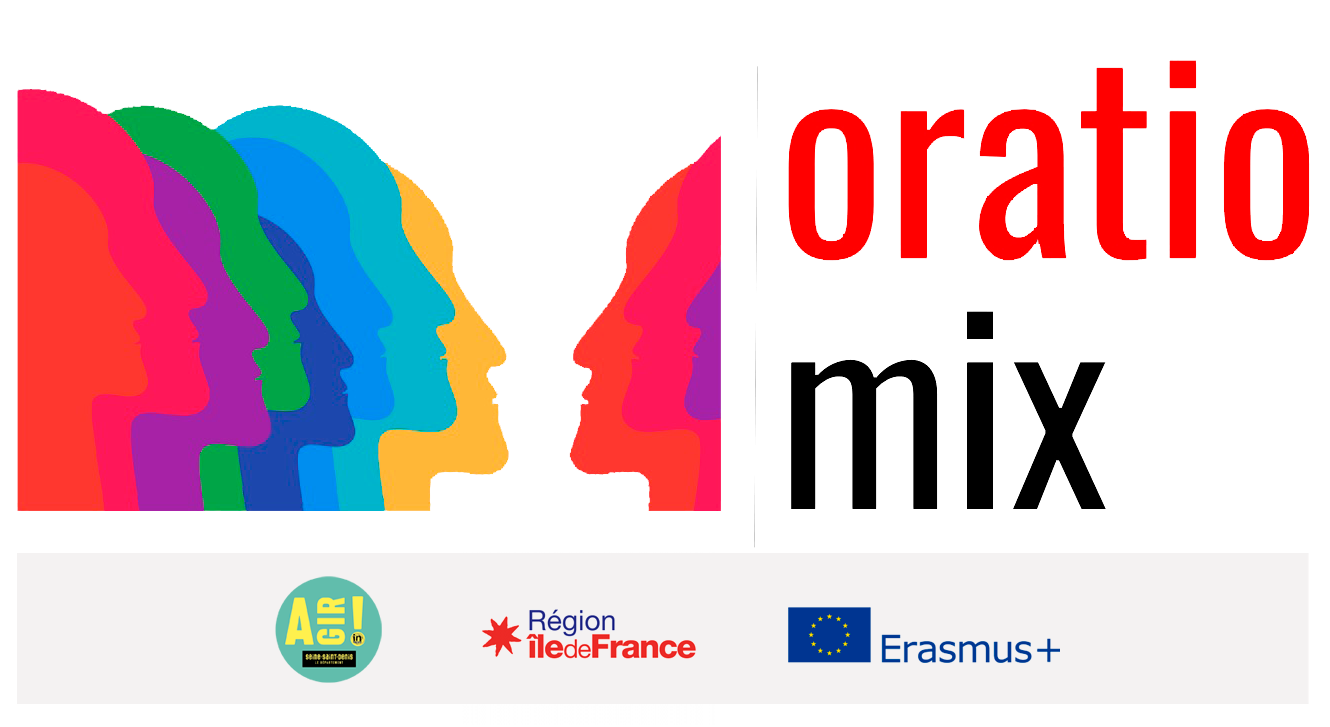Workshop 9 : Staging part 1
Setting up: what do we need?
– Internet access
– a video broadcasting device (projector or screen)
– A workspace: the room provided must be large enough to accommodate all the participants and allow freedom of movement, as the workshop requires physical commitment.
The participants
Nursery school pupils aged between 4 and 7, with a maximum group size of 30.
Teachers
School teachers, educators, drama teachers.
Aims of this workshop
introduce students to different forms of expression
address the question of traditions in different cultures
to understand their bodies in a way that is different from everyday life
Time required
45 minutes
How it works
The workshops use body expression techniques.
Aim
At the end of the session, the children will have :
Developed their curiosity about other cultures
Explored new choreographic possibilities
1. Warm-up
For this session, which will put a lot of strain on the body, we propose a warm-up based on the principles of mindfulness. The students will then take it in turns to concentrate on different areas of their body. This concentration will be encouraged by the introduction of genuine relaxation from the start of the session.
The students choose a place where they feel comfortable. They can then sit down or lie on their backs, as they wish. They are asked to close their eyes.
- Ask them to focus on their breathing: they should visualise the air flowing through their body. As they breathe in, guide them through their nose, throat, chest and belly. Then on the exhale, the opposite path with the belly, chest, throat and mouth.
- Ask them to pay attention only to the sounds inside the room. Then listen only to the noises coming from outside the room.
- Next, they are told that they are on a warm sandy beach. They should feel the parts of their body in contact with the sand, such as their feet, legs, buttocks; if they are lying down, their backs, the backs of their arms and heads. Then ask them to feel the sun on their skin, warming their knees, tummy, throat and face with their nose, mouth, eyes, forehead and cheeks, not forgetting their ears.
The students then move their extremities in a barely perceptible way to wake up their bodies, keeping their eyes closed. Then they try to stand up again with their eyes still closed.
Finally, the students must try to move slowly through the space, with their eyes closed, without touching each other and without coming into contact with the furniture around the room.
You can finish by asking the students how they feel now. How did they feel before the exercise? How did they feel during the exercise?
2. Exchange
Introduce the session with a discussion between you and the students. Explain that today you are going to talk to them about dance. Ask them:
What kind of dance do you know? What does it look like?
Where do people dance?
in the street
in a classroom
on stage,
in the playground…
Why do we dance?
To celebrate,
to celebrate an event (weddings, funerals in West African countries, birthdays, etc.)
to put on a show (end-of-year gala, professional dancers)
What parts of the body can we move when we dance?
This last question leads to an experiment in music. All the students stand up and take their space. To the music, they are guided in the same way as in the warm-up, exploring how to move the different parts of their body.
3. View
You can create your own list of videos on YouTube or use the playlist we have created from a collection on YouTube. The dances we offer come from cultures from around the world and beyond. It’s also interesting for students to become aware of the wealth of existing proposals in their environment thanks to great diversity: classical dance, hip-hop, the French cancan, contemporary dance.
The idea is to pause between each excerpt to ask students what they have seen, what they have noticed that’s different, …
We have organized the playlist in a way that allows for cross-referencing perspectives on similarities and differences. For example, we have the opportunity to observe that:
- Feet are heavily involved in Algeria, Canada, and Ireland, although in different ways.
- Some formations are common, such as the circle or line dance found in Andorra, Belgium, Bhutan, and the USA in country dancing.
- Couples dancing is present on several continents, such as the Brazilian Tango or the Viennese waltz.
- Sometimes it’s the hands that are involved, as in Austria, China, or India.
- Emphasis on the pelvis is seen in the Democratic Republic of Congo, Polynesia, and Egypt.
- Dancers hold each other’s shoulders in Armenia, Bosnia and Herzegovina, Bulgaria, and Greece.
- Accessories are sometimes used, like scarves in Albania and Italy with the pizzica, large skirts as in Colombia, Costa Rica, and Spain, or even fans in Japan and small feather dusters in Benin.
- The theatricality of traditional dance in Botswana can be compared to contemporary dance.
Bonus: Have a world map to show students where the countries you mention are located so they can relate it to their own place of living!
4. Restitution
ow, we invite the students to claim their own space and to experiment with new forms of movement that they’ve just watched and discussed. The facilitator can guide the students in this direction by offering gentle reminders of movements they had noticed. You can also take note if a student is engaged in an interesting exploration and suggest to the group that they follow their lead, before moving on to another student.
